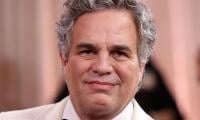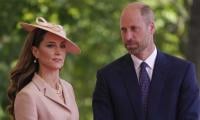An economic dystopia
The economic policies adopted by our self-serving elite have spawned a vicious cycle of low levels of economic growth, socio-economic inequality and regional economic disparities. Notwithstanding official rhetoric over economic achievements, the current dismal statistics of economic growth and socio-economic development present a bleak scenario.
The growth in the gross domestic product has failed to pick up during the last three years though the prices of petroleum products in the international market halved during the same period. During the last three years, the government borrowed $11 billion from foreign sources alone taking the total external debt and liabilities from $62 billion to $73 billion as per the statistics of the State Bank of Pakistan (SBP).
Further, the foreign direct inflows in fiscal 2016 declined to $2.1 billion compared to $2.7 billion inflows in fiscal 2015. According to the SBP, during the last one fiscal year, portfolio investment witnessed a downward trend and dropped by 135 percent. Our exports, too, are on decline; they dipped by $2.1 billion in the last one fiscal year alone.
The latest depressed economic indicators show our economic policies do not have the potential to provide sustained economic growth in the long term. Independent economists predict that in 2018 the country would have to start repaying some of the expensive foreign loans and might face a crisis in balance of payments.
On the other hand, the statistics of poverty and human development demonstrate that we have not succeeded at bringing the fruits of economic development to a vast majority of our people. People have to contend with a pro-elite economy that cannot meet even their minimum requirements in terms of jobs, schools, hospitals and social security.
It is evident in the annual per capita income of the bottom 60 percent of the population, which is nearly $730 as per the Pakistan Economic Survey 2013-14. In comparison, the per capita income of 0.1 percent of the population is $1 million as calculated by economist Dr Akmal Hussain.
In 2014-15, around 39 percent Pakistanis lived in multidimensional poverty, while the incidence of poverty was as high as 73 percent in the tribal areas and 71 percent in Balochistan. Pakistan is ranked 79th out of the 109 countries on the Global Food Security Index as 60 percent citizens are food insecure. Half of our women and children (under five) are malnourished.
Pakistan’s young population is its major asset. The development of human capital ought to be our number one concern for sustainable development, but this has not been the case. Investment in education and human development figures at the lowest rung of the government’s priorities.
No wonder, as per latest official statistics, 20 percent of children between six and 16 years do not attend schools. The remaining 80 percent enrolled in schools get perfunctory education which does not make them adequately literate or skilful to be productive workers.
On the other hand, according to the global assessment of the countries towards the United Nations’ health-related Sustainable Development Goals (SDGs), Pakistan is ranked 149th among 188 nations and shares the score of 38 out of 100 with Bangladesh and Mauritania.
This dismal state of the economy and human development is an outcome of fact that our elite is enamoured by the ‘shopping mall model’ of development as adopted by the Gulf States, though our country’s economic resource base and political realities are entirely different from those countries. This pattern of development has only benefited the rich and created a delusion of prosperity in big cities and done little to alleviate the sufferings of an overwhelming majority of the people especially in the rural areas.
The governing elite has manipulated and rigged the political economy for its own advantage and hijacked the country’s limited resources for themselves. In our skewed decision-making system a small number of people have captured the levers of power with all resources. An oligarchy comprising landed gentry, big businessmen, politicians and top echelons of the civil-military bureaucracy sees to it that economic development serves its interests at the cost of the general public.
A small rural gentry lords over the rural areas and takes away a large portion of agriculture produce and financing to the agriculture sector by banks. The ruling elite also own a sizeable part of the country’s industry. Banks have periodically written off loans worth billions of rupees to the elite encouraging capital flight to offshore. Given the scale of corruption, it can be safely estimated that half of the public funds appropriated for development works are siphoned off in personal accounts.
Our pattern of economic development subsidises the rich by giving them access to scarce inputs like land and finance while the poor fend for themselves. While all development is elite-centric, the ruling conglomerate has refused to pay its share of taxes to the public exchequer. Pakistan has one of the lowest tax-to-GDP ratios, around 9-10 percent of the GDP, among developing countries. In the real-estate sector alone, the estimate of untaxed back money is in excess of Rs3,000 billion.
There is a need for a thorough debate and a change of tack on the impact of the country’s dysfunctional economic policies and an asymmetrical development model that has become a dystopia for the majority of the population. This is necessary to tackle the growing regional resentment and social and economic injustice in the country.
Email: adnanadilzaidi@gmail.com
-
 Mark Ruffalo Makes Strong Political Comments At 2026 Golden Globes
Mark Ruffalo Makes Strong Political Comments At 2026 Golden Globes -
 Leonardo DiCaprio's Girlfriend Flaunts Stylish Dress After Golden Globes Age Joke
Leonardo DiCaprio's Girlfriend Flaunts Stylish Dress After Golden Globes Age Joke -
 Harry Styles Launches Secret Site, Fuels Comeback Speculation
Harry Styles Launches Secret Site, Fuels Comeback Speculation -
 Kate Middleton's New Approach Expected To Draw Criticism From Meghan's Camp
Kate Middleton's New Approach Expected To Draw Criticism From Meghan's Camp -
 Jennifer Lawrence Admits Feeling Nervous Over Taking New Step
Jennifer Lawrence Admits Feeling Nervous Over Taking New Step -
 Lee Cronin’s ‘The Mummy’ Drops Its Chilling First Trailer
Lee Cronin’s ‘The Mummy’ Drops Its Chilling First Trailer -
 Louis Tomlinson Reveals What Former 1D Members' Dynamic Is After Liam Payne's Death
Louis Tomlinson Reveals What Former 1D Members' Dynamic Is After Liam Payne's Death -
 Jacob Elordi, Ana De Armas Get Cozy During 2026 Golden Globes
Jacob Elordi, Ana De Armas Get Cozy During 2026 Golden Globes -
 Meghan Markle Turns Juvenile And Plans Half Bit Ruse: ‘She’s Trying To Get On Her Radar’
Meghan Markle Turns Juvenile And Plans Half Bit Ruse: ‘She’s Trying To Get On Her Radar’ -
 Anthropic Rolls Out Healthcare Features For Claude AI Amid OpenAI Push
Anthropic Rolls Out Healthcare Features For Claude AI Amid OpenAI Push -
 Inside 'Stranger Things' Team's Daring Method To Film Finale
Inside 'Stranger Things' Team's Daring Method To Film Finale -
 Robert Irwin Announces His Return To Reality TV After 'DWTS' Victory
Robert Irwin Announces His Return To Reality TV After 'DWTS' Victory -
 Uber Faces Landmark Trial In US Over Sexual Assault Claim
Uber Faces Landmark Trial In US Over Sexual Assault Claim -
 Zoë Kravitz Makes Major Decision Before Arriving At 2026 Golden Globes
Zoë Kravitz Makes Major Decision Before Arriving At 2026 Golden Globes -
 Jennifer Lawrence Offers Major Role To Ariana Grande, Singer Responds
Jennifer Lawrence Offers Major Role To Ariana Grande, Singer Responds -
 Maya Hawke Highlights Major Discrepancy In 'Stranger Things' Season 5
Maya Hawke Highlights Major Discrepancy In 'Stranger Things' Season 5



